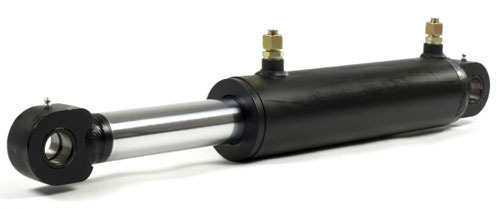Today’s modern industries get equipped with a variety of technologically forward systems that make the process quite convenient and streamlined. One of the vital equipment in this system is the hydraulics; the application of hydraulic equipment is substantially large, ranging from small systems in automobiles to larger systems in machinery used for mining.
Downtime is a common occurrence in many industries that results in lost production time and money. But if you are capable of rebuilding or repairing a component, you can drastically reduce the expenses associated with downtime caused by system issues.
One such thing is hydraulic cylinder honing; it is a simple, small, yet integral process of hydraulic cylinder repair or rebuilds. Much like grinding, honing is utilized to bestow the hydraulic cylinder with a precise surface texture that gets expected for its optimal application.
Many consumers opt to purchase a ready-made honed hydraulic cylinder; however, rehoning the cylinder will save thousands of dollars.
Let’s see how honing can be beneficial.
1- Reduces the chances of component failure:
Hydraulic failures can instantly become expensive, inconvenient, and critical to consumer’s safety, such as in aerospace manufacturing. Honing, on the other hand, can make the surface of crucial components free from inconsistencies, that otherwise could have caused further damage like uneven wearing of metal. Furthermore, honed pistons take longer to wear down because honing can facilitate smoother movements within hydraulic cylinders
2- Improved fluid transmission:
A hydraulic system can operate effectively only if hydraulic fluid transmission is smoothly happening inside the system. A honed tube for the hydraulic cylinder ensures that all the metal inconsistencies get eliminated, which means the machine surface is smooth and clear. This smooth surface will foster the fast and consistent transmission of fluid throughout the system.
3- Efficient and robust pistons:
If you notice a hydraulic system, most of the work gets done by the piston. Which means they get subjected to a considerable amount of strain during the constant operation. Thus, preventing them from friction, fluid resistance, and premature wear is important to keep the process running smoothly. Surface honing or chroming of piston rods and the cylinder will gradually increase the piston’s longevity and improve its tolerance rate.
4- To prevent internal leakages:
The leaks in the hydraulic system can facilitate the entrance of contaminants into the hydraulic system. These contaminants then become responsible for creating weak spots, scratches, and other abnormalities along the tube’s wall. As a result of irregularities, the seal wears out significantly and could lead to internal leakages. Thus, minimizing the performance level of the hydraulic cylinder.
Five tips on how a pre-decided and regular honing will help the production line
a- Regular honing is an effective inspection tactic. Through the light honing, you can detect severe conditions on the hydraulic honed barrel.
b- Un-honed hydraulic cylinders have the chance of acquiring inconsistent surface overtime. When the cylinders or pistons aren’t regularly checked severity of the damage can grow; thus, fostering system caused downtime and extra repair or replacement charges.
c- Regular honing will help your system to acquire a well-configured surface finish. This, in return, will improve and determine friction, reliability, and wear.
d- Honing also creates a secure seal around a hydraulic cylinder, providing extended life and preventing costly leaks.
e- With regular cylinder repair services, you can tackle any problems with the size, shape, and geometry of the cylinder at a minimal cost.
f- Pre-decided or regular honing will help you to attend to all areas of your system. Thus, ensuring smoothest performance and most reliability out of your engine.
What to do after the honing is done?
a- Once the honing work gets done on the cylinder, the cylinder might still possess residual honing grit on the surface. Make sure to get rid of it by washing the cylinder with warm soapy water and drying it properly.
b- Later, use an oil-dampened cloth and wipe it on the cylinder wall. If you catch residual honing grit while wiping the wall, make sure to follow the previous step of washing again.
c- Once the surface is adequately cleaned, apply a thin coat of oil on the cylinder wall before proceeding with the rebuild.
Pro Tip: Following this simple tip while rebuilding the hydraulic system will ensure that the system runs conveniently without any issues.
Bottom line
In some instances, when cylinder damage is too intense, you can always collaborate with honed hydraulic tubes manufacturer or hydraulic cylinder repairer to determine the most appropriate action. They can provide you with services like additional honing, refurbishing, or replacing the affected section. Note that to improve the output of your hydraulic cylinders, honing is an integral part that will avoid extra expenses that comes with buying a new hydraulic system.
We hope this blog post was able to give you all the necessary insight on hydraulic cylinder honing.



